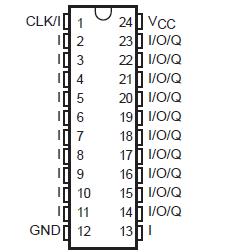TIBPAL22V10AM: Features: • Second-Generation PLD Architecture• Choice of Operating Speeds TIBPAL22V10AC . . . 25 ns Max TIBPAL22V10AM . . . 30 ns Max TIBPAL22V10C . . . 35 ns Max• Increased Logic...
floor Price/Ceiling Price
- Part Number:
- TIBPAL22V10AM
- Supply Ability:
- 5000
Price Break
- Qty
- 1~5000
- Unit Price
- Negotiable
- Processing time
- 15 Days
SeekIC Buyer Protection PLUS - newly updated for 2013!
- Escrow Protection.
- Guaranteed refunds.
- Secure payments.
- Learn more >>
Month Sales
268 Transactions
Payment Methods
All payment methods are secure and covered by SeekIC Buyer Protection PLUS.

 TIBPAL22V10AM Data Sheet
TIBPAL22V10AM Data Sheet







